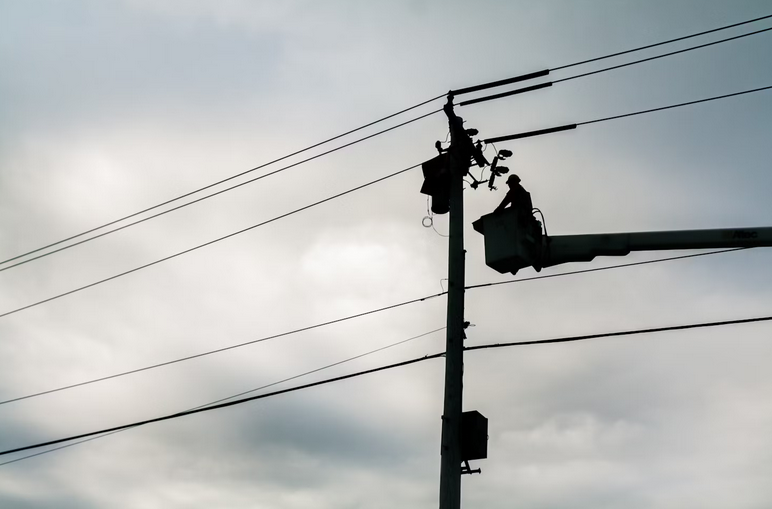Owning a home is not always about all the joys. Sometimes, it comes with a set of challenges. For many property owners in Ontario, one challenge they face is the presence of hydro easement ontario. These legal agreements can restrict how you use your land, leaving some homeowners wondering if they can remove them altogether.
If you’ve ever felt frustrated about those power lines running through your backyard or the limitations on what you can do with your property, you’re not alone. Understanding hydro easements and their implications is crucial for making informed decisions about your home. Find out everything you need to know about navigating this complex issue and explore whether it’s possible to remove a hydro easement from your property.
Legal Agreements
Hydro easements are legal agreements that basically grant utility companies the right to legally access and use a portion of your property for their infrastructure. This often includes space for power lines, poles, or transformers. While these agreements serve a public purpose—ensuring electricity delivery—they can create significant limitations on how you utilize your land.
When you purchase a property, these easements may already be in place. It’s essential to review any existing documents related to your land before finalizing the purchase. Each agreement can vary in terms of restrictions and obligations. Some might allow only limited access, while others could impose conditions regarding landscaping or construction within designated areas. Knowing the specifics can help you navigate potential issues when planning future projects on your property.
Removal Process
The removal process for a hydro easement begins with understanding the legal framework surrounding it. This often involves reviewing the original agreements establishing the easement on your property. Next, you’ll need to reach out to the utility company that holds rights over the easement. They may have specific procedures in place for addressing such requests.
Gathering support from neighbors can also strengthen your case if they share similar concerns. Documentation is crucial during this phase. Ensure you compile all relevant paperwork, including surveys and any communications exchanged with the utility provider. Once you’ve submitted your request, be prepared for negotiations or even potential disputes. The process can take time, as it often requires legal evaluations and possible adjustments to existing infrastructure.

Impacts on Property Use and Value
Having a hydro easement on your property can significantly influence how you use the land. With utility companies having access to maintenance and repairs, your ability to build or landscape may be limited. This restriction can deter potential buyers who envision a different use of the space. Additionally, properties encumbered by easements often face depreciation in value.
Buyers might perceive an easement as an inconvenience or liability. Not everyone is comfortable with utility lines running through their yard. On the flip side, some homeowners may find that proximity to infrastructure can enhance convenience, especially in urban settings where access to power is crucial. However, this perception varies widely among individuals and markets.
How to Check Hydro Pole Ownership in Ontario
Determining hydro pole ownership in Ontario can be straightforward if you know where to look. Start by contacting your local utility company. They typically maintain records of their infrastructure, including hydro poles. You might also turn to municipal offices. Many municipalities keep detailed maps that show the locations and ownership of utility lines within their jurisdiction.
If you’re still unsure, consider hiring a land surveyor. These guys have access to specialized tools and databases that can clarify property boundaries and easement issues related to hydro poles. Engaging with neighbors who might have faced similar issues could yield helpful insights as well. Knowing who owns what helps clarify what rights they have over your property.




 One of the primary reasons to hire a truck accident lawyer is their ability to maximize your compensation. These lawyers have a deep understanding of the types of damages you may be entitled to and the various factors that influence their quantification. They will consider both the economic and non-economic damages resulting from the accident, such as medical expenses, future medical care, lost wages, loss of earning capacity, pain and suffering, and emotional distress.
One of the primary reasons to hire a truck accident lawyer is their ability to maximize your compensation. These lawyers have a deep understanding of the types of damages you may be entitled to and the various factors that influence their quantification. They will consider both the economic and non-economic damages resulting from the accident, such as medical expenses, future medical care, lost wages, loss of earning capacity, pain and suffering, and emotional distress.




 If your flight has been disrupted, you may be entitled to compensation from the airline. The amount of compensation will vary depending on the length of the delay and the distance of the flight. To make a compensation claim, you must contact the airline directly. You will need to provide your booking reference and details of the disruption. The airline will then assess your claim and determine whether you are eligible for compensation.
If your flight has been disrupted, you may be entitled to compensation from the airline. The amount of compensation will vary depending on the length of the delay and the distance of the flight. To make a compensation claim, you must contact the airline directly. You will need to provide your booking reference and details of the disruption. The airline will then assess your claim and determine whether you are eligible for compensation.